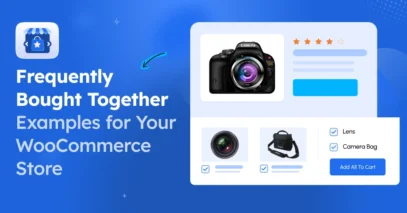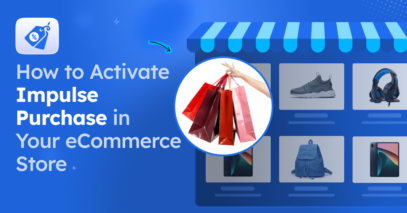Growing your online store requires adding proven marketing strategies that really work. Walmart’s approach offers effective lessons that you can apply to your business.
in fact, Walmart generated $500.4 billion in revenue in the first three quarters of fiscal year 2025.
This success comes from consistent strategies focused on the customer.
They use clear pricing, smooth shopping experiences, and targeted messaging that builds trust and loyalty. These simple tactics help them create long-term growth and repeat buyers.
I’ve researched Walmart marketing strategies across various industries, and this approach continues to deliver strong results for many businesses, regardless of size or budget.
You don’t need a huge budget to follow their lead. Small, smart changes in your marketing can make a big difference in your results.
So, let’s get started,
Why You Should Know Walmart’s Marketing Strategy?
If you’re trying to stand out in today’s online marketplace, you need more than just good products. You need a strategy that works at scale. That’s exactly why studying Walmart makes sense.

- Understand success: Walmart leads the retail industry by knowing what people want. They serve a wide customer base with smart choices. You can also grow by focusing on your customers’ real needs.
- Smart pricing: Walmart’s pricing strategy offers low-priced products that attract price-sensitive shoppers. People love a good deal. You can also win trust by keeping prices fair and clear.
- Better promotions: Their promotion strategy gives helpful discounts and runs smart sales. These offers feel personal and timely. It’s a simple way to boost loyalty and repeat sales.
- Customer insights: Walmart uses customer data to show what people really want. They highlight related products and offer great suggestions. That makes shopping easier and more fun.
- Stand out: They build brand awareness by showing up where customers are online and in busy places. Clear messages keep them top of mind. You can do the same with simple marketing moves.
- Product variety: Walmart’s wide product selection matches different customer preferences. More choice means happier buyers. It also keeps people coming back.
- Reach more: Walmart’s localized marketing strategies speak to local communities. This helps them connect with more potential customers. You can grow faster by going local, too.
- Run smoothly: Their operations support product innovations and strong customer value. Everything works well together. A smooth system helps you serve better and scale faster.
- Grow brand: Walmart engages with local communities to build real relationships. People remember how a brand makes them feel. That trust leads to long-term success.
- Think bigger: Walmart’s international markets strategy helps it grow fast. They know how to win in different places. You can learn from this and grow your market share, too.
Walmart isn’t just a retail leader. It’s a business that reshaped how customers shop and how businesses compete.
By studying what they do, you can pick up actionable Walmart marketing tactics to scale your own business.
The Impact of Walmart on Retail and E-Commerce
You’ve seen retail has evolved over the years, but Walmart keeps leading the way.
In 2023, they made over $611 billion, remaining the world’s top retailer.
That kind of success isn’t luck, it comes from a smart Walmart marketing strategy focused on low prices, smooth operations, and making shopping easy.
Here’s how Walmart’s approach creates results that you can learn from.
i. Adjust Pricing
Walmart’s “Everyday Low Price” approach changed how people think about affordability. Instead of running constant sales, they offer steady value every day.
This pricing approach builds trust with price-conscious customers who know they’re getting a good deal. It’s simple, clear, and powerful.
For example, you can focus on delivering consistent value in your e-commerce business. You don’t need flashy discounts, just prices that make sense to your customers.

ii. Make eCommerce Work
Walmart didn’t always lead in online shopping, but it grew fast by buying Jet.com and turning stores into delivery hubs. This boosted Walmart’s pricing strategy and helped it stay strong in the retail industry.
You can take a similar customer-centric approach by connecting your online shop with your physical space. Flexible shipping strategies like local pickup or same-day delivery can make things easier for your customers.
For example, if you run a boutique, letting shoppers buy online and pick up in-store can create a smooth and personal experience. It’s a small change that helps build loyalty and trust.
iii. Optimize the Supply Chain
Walmart’s supply chain is one of the most efficient worldwide. Their smart systems help deliver products faster while keeping costs low.
If you’ve had shipping delays or high costs, fixing your supply chain is important. Simplifying how you work saves money and speeds up delivery, which also helps with your Walmart digital marketing success.
For example, if you run an online store, partnering with local couriers or automating order tracking can reduce delays and improve customer satisfaction. You can also use the WooCommerce Shipping plugin to smooth the process. This keeps buyers happy and coming back for more.
iv. Building Customer Loyalty
Walmart meets customers wherever they shop, whether in stores or through fast delivery. Their promotion strategy includes offering customers discounts that keep shoppers coming back.
By making shopping easy and affordable with low-priced products and helpful deals, Walmart builds strong customer perception and trust.
For example, if you run a small business, you can offer exclusive discounts or bundle complementary products to encourage repeat purchases. This helps your customers feel valued and loyal, no matter where they shop.
Why This Matters for Your Business?
Walmart marketing strategy works because it focuses on what your customers really want. You can do the same by:
- Giving your customers great value without hurting your profits.
- Connecting all the ways your customers interact with you, not just online.
- Making your operations run smoothly to support your growth.
- Building a brand that your customers trust and find easy to access.
Look at what works, adapt it to your business, and start seeing better results.
Quick Glance at The Walmart Marketing Mix
Now, let’s break down the marketing approach so you can see how these Walmart advertising strategies can apply to your business.
They stick to the 4Ps of Marketing:
- Product,
- Price,
- Place,
- and Promotion.
Each one plays a specific role in their success, and there’s a lot you can take away from their methods.
1. Product: Diverse Offerings for Mass Appeal
Walmart offers a wide range of products from groceries to electronics and home goods. You can do the same by offering different items that fit your customers’ needs.
When you give your customers many choices, they keep coming back because they trust you have what they want. This builds loyalty and helps grow your sales.
For example, if you sell fitness gear, you could add water bottles and workout clothes. This creates a one-stop shop that makes shopping easier for your customers..

2. Price: Everyday Low Prices Strategy
Walmart is famous for its Walmart pricing strategy of everyday low prices. Instead of relying on occasional sales, they keep prices low all the time, which helps you meet the needs of price-conscious consumers.
This steady price approach builds trust and meets customer expectations because your customers know they don’t have to wait for discounts to get a good deal. It encourages them to shop with you more often.
For example, if you run a small store in a high-traffic area, setting consistent low prices can help you attract price-sensitive customers and grow your market share. This simple sales strategy helps build loyal buyers who keep coming back.

3. Place: Efficient Supply Chain and Distribution
Walmart controls its supply chain to make sure products get to customers quickly and at low cost. You can improve your business by simplifying how you source and deliver your products.
Having an efficient supply chain helps you save money and meet customer expectations for fast delivery. This supports your growth and keeps your customers happy.
For example, if you run an online store, using local warehouses or delivery hubs can speed up shipping times. This smart approach fits well with your Walmart advertising strategies and helps you compete better in the retail industry.

4. Promotion: Targeted Campaigns and Omnichannel Marketing
Walmart uses ads everywhere, from TV and social media to email and in-store. You can do the same by reaching your diverse customer base wherever they spend their time.
Using many channels helps you connect with price-sensitive customers and boost community engagement. This omnichannel approach keeps your brand top of mind and builds loyalty.
For example, if you run a small shop, combining social media posts with email offers and local ads can increase your sales. This fits well with your Walmart promotion strategy and supports your market share growth.

Before getting into the details, think of Walmart’s strategies as actionable steps you can adapt for your store. These aren’t high-budget tactics, they’re practical Walmart marketing strategies you can implement right away to see measurable growth.
11 Lessons from Walmart Marketing Strategy for eCommerce Businesses
Now I am going to explain Walmart marketing strategy to give you direct ways to improve your business, backed by real examples from Walmart’s playbook.
1. Stay Updated on Walmart’s Target Audience at All Times
Walmart knows its customers well by using data to understand what they want and when. You should do the same to keep up with your own audience’s needs and stay ahead.
i. Walmart’s Data-Driven Audience Segmentation
Walmart uses tools to learn who shops, what they buy, and how often. This helps them keep the right products and show ads that match customer interests.
You can do the same by using simple retail analytics services to track what your customers like. This helps you stock better and create marketing that works.
For example, if you run a small café, tracking your best-selling drinks with retail analytics services can help you offer the right specials and attract more customers. It’s a smart way to grow, just like Walmart’s data-driven approach.
ii. How to Apply Audience Insights to eCommerce
You don’t need a huge budget to start using data to understand your customers. Tools like:
- Google Analytics: Track which products and pages your audience loves.
- Hotjar: Get visual feedback on what’s confusing your customers.
- Klaviyo: Learn which emails actually drive sales so you can send smarter campaigns.
For example, if many of your customers buy one product, focus more on it. Show it on your homepage, advertise it, or offer bundles with related items to boost sales.
2. Smart Pricing Strategies That Work
As I mentioned before, Walmart’s “Everyday Low Prices” is one of the key strategies of Walmart. They don’t rely on big sales but offer prices people trust every day.
You can do the same by setting fair prices that compete well and keep you profitable. This approach helps Walmart stay known as the lowest price store, and it can work for you too.
i. Walmart’s “Everyday Low Prices” Model
Walmart works hard to get the best deals from suppliers. This helps them keep prices low without extra discounts.
Because of this, Walmart’s base prices are tough to beat. Customers feel confident they are getting a fair price every time they shop.
For example, if you own a small store, negotiating better prices with your suppliers can help you offer steady, low prices. This builds trust with your customers, just like Walmart’s model.
ii. Tips for Small Businesses to Stay Price Competitive
Even if you’re not Walmart, you’ve got options:
- Use Prisync or Price2Spy to monitor what your competitors are charging.
- Offer value bundles (like combining bestsellers into a discounted package).
- Keep your shipping affordable—free shipping over a certain amount works great.
For example, If you sell handmade candles, you could offer a deal like “Buy 3, Get 1 Free.” It keeps your average order value high while giving customers a reason to buy more.
3. Strategic Product Assortment according to Demand & Trend
Walmart keeps its shelves simple by choosing products that sell well. You can do the same by offering only what your customers want. This helps you save money and increase your sales.
i. Walmart’s Focus on High-Demand Products
Walmart studies customer trends closely to stock only high-demand products. This smart approach helps Walmart grow its market share and meet customer expectations efficiently.
For example, Walmart targets Chinese customers by offering popular items during cultural events, showing how they adjust for a diverse customer base.
You can use effective marketing strategies to track what sells best in your store and focus on those products. This keeps your inventory lean and boosts your sales.
ii. Tools to Optimize Your Product Catalog
Focus on what sells best to improve your product catalog. Use tools to find the right products and boost your sales. You can do the same by using tools like:
- Jungle Scout or Helium 10 to find trending products in your niche.
- Weekly sales reports to identify what’s selling and what’s just sitting there.
- Cross-selling plugins like Product Recommendation for WooCommerce to bundle related items.
For example, if you’re noticing that customers are buying yoga mats but not yoga blocks, create a bundle or run a promo. This encourages people to grab both items and increases your cart value without overstocking low-demand items.
4. The Right Digital Marketing Channels to Focus On
Walmart focuses its ads on where its customers already spend time online. That’s a big part of Walmart’s digital marketing success. You should do the same, choose the platforms your audience actually uses, and align them with your business goals.
i. Walmart’s Approach to Social Media and Paid Ads
Walmart focuses its digital marketing on where its audience already spends time. Whether it’s Facebook, Instagram, or Google, they show up consistently and intentionally.
They combine paid ads with organic content to boost engagement and stay top of mind. This well-rounded Walmart marketing strategy helps them reach more people while staying relevant.
For example, if a Walmart store opens in high-traffic areas, they can run local Facebook ads like “Grand Opening – Big Weekend Deals” to attract nearby shoppers and drive foot traffic.

iii. Adapting Digital Marketing Strategies to Small Businesses
You don’t need Walmart’s budget to make an impact. Start with a smaller, more targeted approach:
- Use Google Ads for search-based campaigns if your product solves a specific need.
- Leverage Instagram and TikTok for visual products like fashion or home decor.
- Focus on Facebook if your audience skews older or likes conversational content.
Here are a few cost-effective tools you can use:
- Canva is for creating professional-looking graphics on a budget.
- Buffer or Hootsuite for scheduling posts across multiple platforms.
- AdEspresso for managing Facebook and Instagram ads efficiently.
For example, if you sell handmade kitchen tools, promote your products with short Instagram Reels showing how to use them. Pair that with a Google Ads campaign targeting “handmade kitchen tools” to drive clicks from people ready to buy.
5. Invest in Brand Loyalty Programs
Walmart knows the value of repeat customers. You can maximize your revenue the same way by giving your loyal shoppers reasons to keep coming back.
i. Walmart’s Rewards and Memberships
Walmart+ is a smart part of Walmart marketing strategy, giving loyal customers free delivery, fuel savings, and special prices. These perks encourage repeat shopping and long-term loyalty.
Customers feel they’re getting more than just products, they’re joining a money-saving community. This strengthens brand trust and makes Walmart hard to beat.
For example, a busy parent who shops online weekly can stick with Walmart+ for free grocery delivery and gas discounts, saving both time and money.
ii. Crafting Loyalty Programs for Small Businesses
You don’t need a big rewards program to see results. Start simple:
- Offer points for every purchase, which customers can redeem for discounts later.
- Provide exclusive access to sales or early product launches for repeat buyers.
- Send personalized thank-you emails or small discounts after a certain number of purchases.
Tools like Smile.io and LoyaltyLion can help you set up a professional loyalty program without complicated coding or high costs.
For instance, if you run a skincare store, let customers earn points for every $1 spent. When they reach 500 points, they get $10 off their next purchase. It’s a small investment that keeps them coming back to you instead of a competitor.
6. Use Competitive Promotions
Seasonal deals and time-sensitive offers are great ways to boost sales and bring new customers into the fold. Walmart has mastered this, and you can too with the right planning.
i. Walmart’s Promotional Campaigns and Seasonal Offers
Walmart’s promotions are always on point. During the holidays, they roll out massive discounts on top categories like electronics and toys.
They also use their ad channels to highlight these deals well in advance, so customers know what to expect. The seasonal Walmart marketing campaigns are carefully timed and designed to hit the sweet spot for shoppers.
ii. How to Run Effective Promotions for Your Store
You don’t have to cut into your profits to make promotions work:
- Bundle products that naturally go together and offer a discount on the set.
- Run limited-time offers to create urgency, especially during the holidays.
- Use BOGO deals (Buy One, Get One) for slower-moving inventory to encourage higher cart values.
Tools like Klaviyo, or OptinMonster can help you craft and promote these deals to the right audience.
For example, if you sell pet supplies, create a “Winter Care Kit” with a discounted bundle of pet blankets, paw balm, and coats. Promote it through email campaigns and limited-time popups on your site to grab attention before the cold season hits.
7. Maintain a Strong Brand Image
Your brand is how people perceive your business. A strong, trustworthy image encourages customers to buy from you repeatedly. Walmart prioritizes trust and value, and you can follow a similar path to make your brand memorable.
i. Walmart’s Emphasis on Trust and Value
Walmart builds trust by consistently offering quality products at prices people can count on. Customers know what to expect, and that reliability keeps them coming back.
They also invest in clear return policies and helpful customer service, showing that they care about the shopping experience. This plays a big part in building long-term loyalty.
For example, their 90-day return policy gives peace of mind and shows they stand by their products, an important part of the Walmart marketing strategy that builds credibility and trust.
ii. Building a Positive Brand Perception for Small E-Commerce
Start by defining what your business stands for. Communicate that clearly across your website, emails, and social media. Focus on these strategies:
- Consistency: Use the same tone, logo, and colors everywhere, from your website to your packaging.
- Transparency: Be upfront about pricing, shipping times, and product quality.
- Social Proof: Display customer reviews and testimonials to build trust.
Tools like Trustpilot and Google My Business can help you collect and display reviews. For brand consistency, tools like Canva or Adobe Express let you create professional visuals that align with your style.
For example, if you sell handmade jewelry, share behind-the-scenes videos on Instagram showing how you create your pieces. It makes your brand relatable and authentic, which builds trust.
8. Analyze and Learn from Competitors
Keeping an eye on your competitors helps you spot trends, refine your Walmart marketing strategy, and offer more value to your customers.
Walmart continuously learns from others to improve its operations, and you can do the same to stay competitive. Partnering with a marketing staffing agency can also give you access to experts who can help analyze trends and implement winning strategies.
i. Walmart’s Strategies to Stay Ahead in Retail
You probably see how Walmart watches competitors like Target to stay ahead. Offering lots of products at low prices is a big part of their walmart marketing strategy.
For example, Walmart sells bulk items perfect for families who want to save money. Target focuses more on stylish, higher-end products with exclusive brands to create a special shopping feel.
By tracking what Target does, Walmart changes prices and product choices to match what its customers want. This helps Walmart stay competitive and keepsWalmart marketing strategy sharp.
ii. Competitive Analysis Techniques for E-Commerce
You don’t need expensive tools to analyze your competitors. Focus on these steps:
- Identify your top competitors: Use tools like SEMrush or Ahrefs to see which businesses rank for the same keywords as yours.
- Study their websites: Look at their product descriptions, pricing, and promotions.
- Track their marketing efforts: Follow their social media and ads to see what’s working for them.
For deeper insights, tools like BuzzSumo can show you which of their content gets the most engagement. Combine this with Google Trends to spot opportunities for new products or promotions.
For instance, if a competitor’s new product launch gets a lot of buzz, you can identify the features customers are excited about and see if you can offer something similar.
9. Prioritize Customer Experience
Walmart’s success comes from making shopping easy and smooth for customers. Focusing on great customer experience is a smart part of any Walmart marketing strategy. You can do the same to keep your customers happy and grow your sales.
i. Walmart’s Customer-Centric Policies
Walmart’s free pickup service, easy returns, and 24/7 customer support show how much they value convenience. Their website is designed for quick navigation, and they constantly improve their services based on customer feedback.
These small details make shopping with Walmart hassle-free and encourage repeat visits.

ii. Enhancing the Shopping Experience for Your Audience
For your store, think about the entire customer journey—from the moment someone lands on your website to after they receive their order. Here are simple ways to improve their experience:
- Simplify navigation: Make it easy for customers to find what they need with clear menus and a strong search feature.
- Offer multiple support options: Use tools like LiveChat or Zendesk to provide instant help.
- Optimize checkout: Ensure your checkout process is quick and accepts multiple payment methods.
You can also use tools like Hotjar to track how customers interact with your site and identify areas for improvement.
For example, if customers frequently abandon their carts, test offering free shipping for orders over a certain amount. Small tweaks like this can make a big difference in keeping shoppers happy and coming back.
10. Master Supply Chain Efficiency
Walmart’s supply chain is known for being fast and cost-effective, which helps them stay the lowest-priced store. Using smart supply chain strategies can help you save money and keep your products ready for customers.
i. Walmart’s Supply Chain Innovations
Walmart uses technology and partnerships to simplify every step of its supply chain. They rely on real-time data to track inventory. It ensures products are always available without overstocking [Because it’s automated]
Distribution centers are strategically located, and advanced systems manage deliveries with precision, keeping costs low and customers happy.
Their partnerships with suppliers are equally strong. By collaborating closely, they negotiate better prices and ensure faster production cycles. It’s all about reducing waste and maximizing efficiency.
ii. How E-Commerce Businesses Can Improve Logistics
Improving your supply chain doesn’t require a massive budget. Start with practical changes:
- Track inventory in real-time: Use tools like TradeGecko or Zoho Inventory to avoid running out of stock or over-ordering.
- Optimize shipping methods: Compare shipping carriers to find the most affordable and reliable options for your business.
- Build supplier relationships: Negotiate deals that benefit both sides, and look for ways to speed up production and delivery times.
If you want an in-depth guide, consider “Supply Chain Management For Dummies” or take an online course like Coursera’s Supply Chain Management Specialization. These resources break down how to create a smooth and cost-effective process for small businesses.
To take this further, offer a free guide or lead magnet like “5 Steps to Optimize Your Small Business Supply Chain.” Use it to educate your audience and grow your email list.
11. Embrace Omnichannel Retailing
Walmart’s omnichannel retailing is a key part of its advertsing strategy, blending online and in-store shopping easily. By offering multiple shopping options, you can make it easy for your customers to buy from you anywhere, boosting satisfaction and loyalty.
i. Walmart’s Integration of Online and Offline
Walmart uses both physical stores and online shopping to make buying easy. Whether you shop online or in-store, you can see real-time stock and get options like in-store pickup or same-day delivery.
Walmart advertising strategy also connects online ads with physical stores. It helps bring more customers to high-traffic locations. This mix of online and offline helps Walmart reach more people and meet their needs.
For example, when you buy groceries on Walmart.com, you can pick them up at a nearby store just hours later. This simple convenience is a big part of Walmart’s marketing strategy.
ii. Implementing Omnichannel Strategies for E-Commerce Success
For small businesses, building an omnichannel experience can feel challenging, but simple steps can make a big difference:
- Sync your online and offline inventory: Use tools like Shopify POS or Square to connect sales across channels.
- Offer flexible delivery options: Add in-store pickup or local delivery if you have a physical store.
- Use social media for direct sales: Platforms like Instagram and Facebook make it easy to sell directly while keeping your website as a central hub.
Omnichannel doesn’t mean duplicating Walmart’s approach it’s about using tools and strategies that fit your audience.
For example, if you sell eco-friendly products, you could let customers order online and pick them up at local farmers’ markets or pop-up shops.
How Can E-Commerce Tools Help You Implement Walmart Marketing Strategies?
With the right tools, you can simplify pricing, promotions, product feeds, and customer engagement to follow Walmart marketing strategies without the need for a massive budget.
1. Tools for Pricing and Promotions
Use tools like Dynamic Discount For WooCommerce or Shopify Scripts to:
- Automate discounts and coupons.
- Schedule sales easily.
- Avoid manual errors in pricing.
2. Solutions for Product Feeds
Tools like Product Feed Manager for WooCommerce or DataFeedWatch let you:
- Create accurate product feeds for platforms like Google Shopping.
- Auto-update stock and pricing.
- Optimize feeds for better visibility.
3. Customer Engagement Tools
Platforms like Mail Mint or HubSpot CRM help you:
- Send personalized emails and automate follow-ups.
- Collect customer feedback.
- Offer live chat with tools like Tidio to improve response times.
Conclusion
Walmart’s success proves that smart strategies and adapting to change really work. These ideas can help any business grow.
Focus on competitive pricing, creating a great customer experience, and using tools that save time. These simple steps can make a big difference.
Even though Walmart is huge, its approach works well for smaller businesses too. Taking action now and sticking to the basics sets the stage for success.
You can start selling on Walmart, and with Product Feed Manager, you can easily upload your products and get started fast.
** FAQs **
1. What makes Walmart’s marketing strategy work so well?
Walmart keeps prices low and makes shopping easy for you. They study customer behavior and improve based on what people like you need. That’s why so many store customers keep coming back.
2. How does Walmart personalize its marketing for me?
Walmart learns what you buy and shows you things you’ll probably love. Their Walmart product strategy helps you find more of what fits your taste. It’s all about making shopping feel made just for you.
3. How does technology improve Walmart’s eCommerce strategy?
Walmart’s tools help you get fast delivery and a smoother shopping experience. Their eCommerce strategy is built to save you time. Shopping on the Walmart Marketplace feels simple and stress-free.
4. How does Walmart keep advertising relevant to me?
You see deals that match your needs thanks to Walmart’s smart promotion strategy. Whether you’re on TV or online, offers follow you naturally. It’s all about showing what you care about when you need it.
5. Can you use Walmart’s marketing strategies for your business?
Yes, you can focus on competitive prices, easy shopping, and knowing your customers well. These simple steps work for Walmart—and they can work for you too. Add in tools like a solid sales strategy, and you’re set to grow.






![Walmart Marketing Strategy: 11 Practical Lessons for Your Business [2025]](https://rextheme.com/wp-content/uploads/2024/12/Walmart-Marketing-Strategy-11-Lessions.webp)


